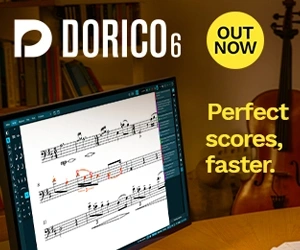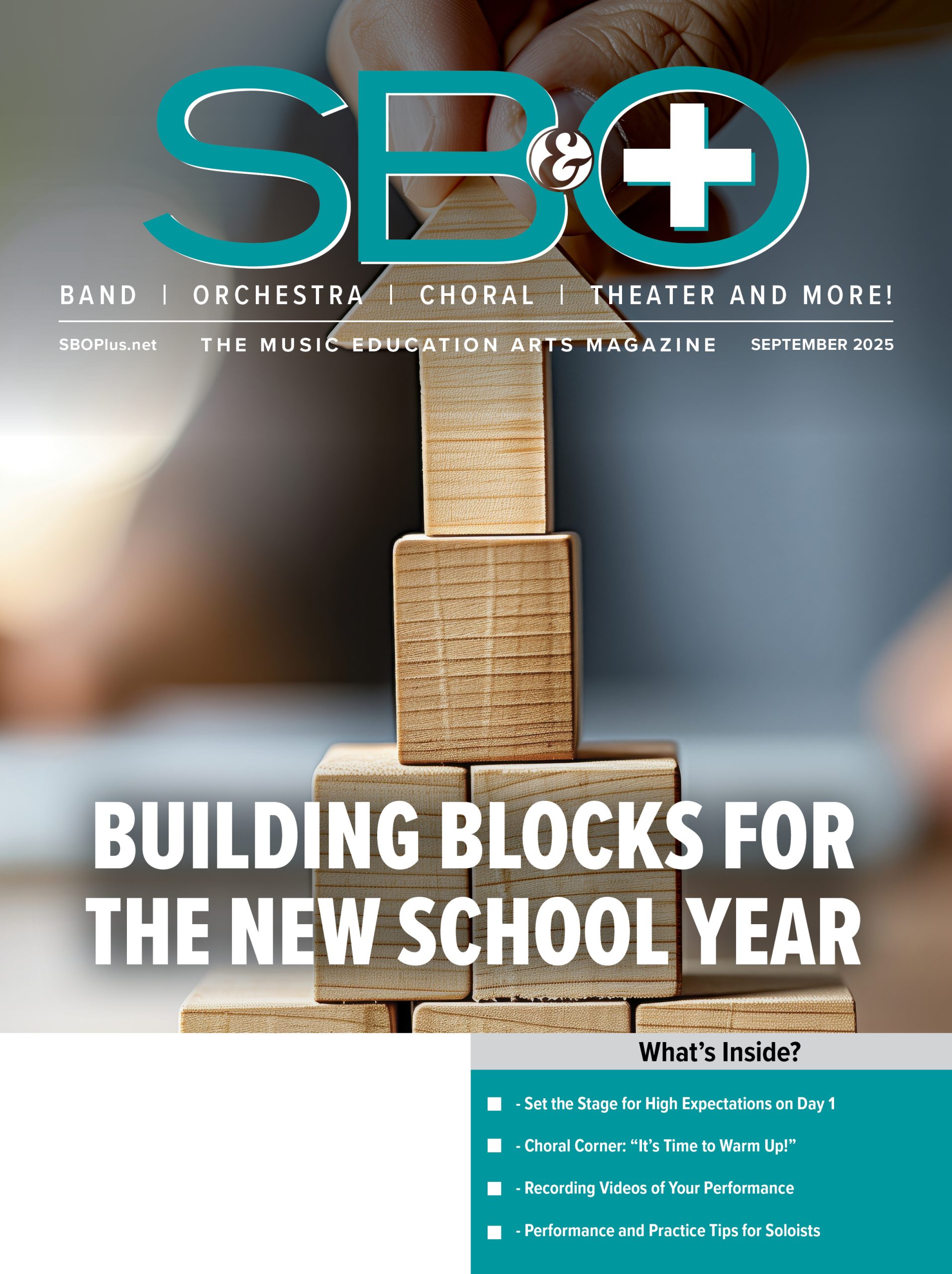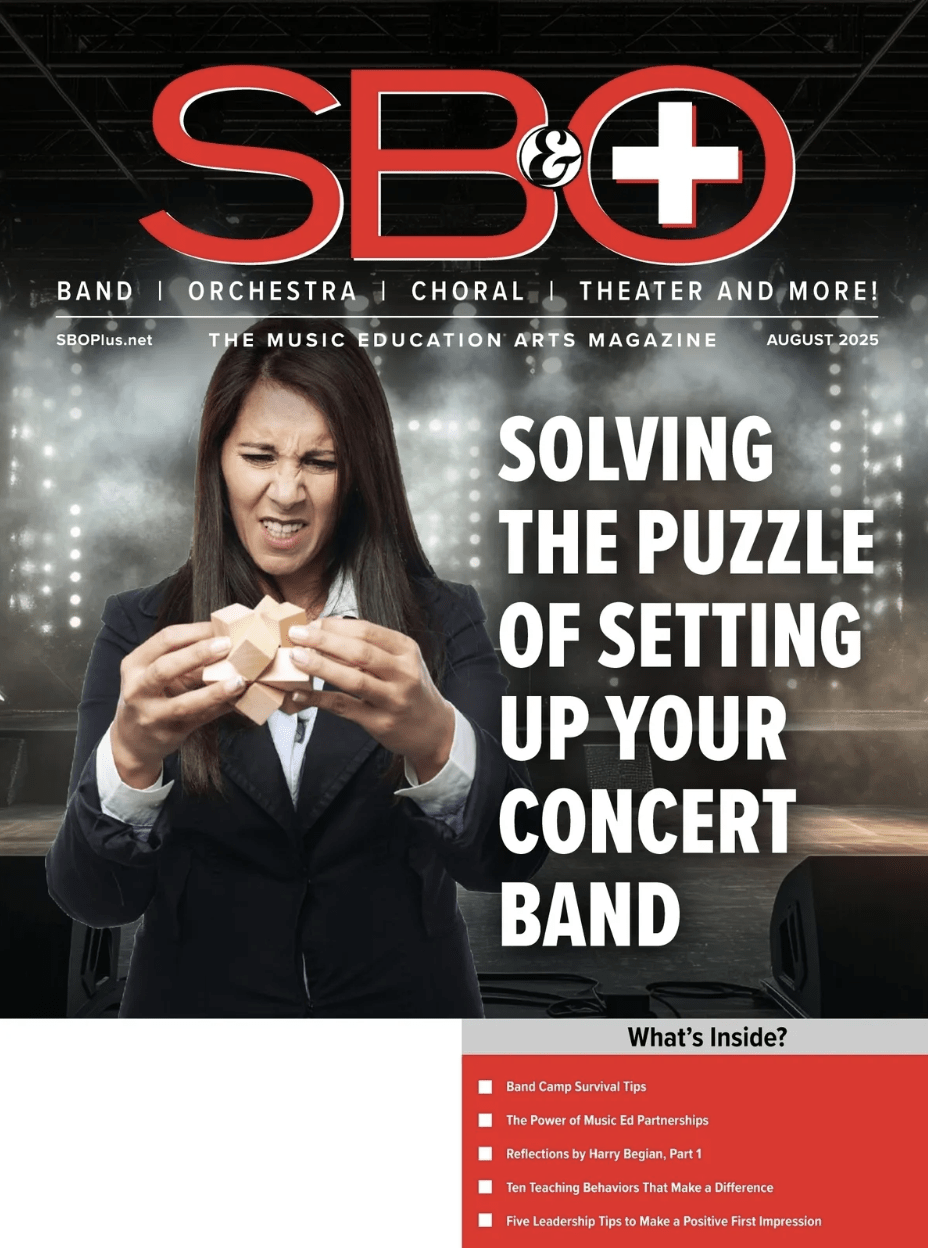
Many years ago, I heard the composer James Barnes talk about the Foreground, Midground, and Background of the music. It was a pretty brief mention without much explanation, but that eventually became central to how I have shaped the sound of any ensemble I was fortunate enough to lead.
When we talk to our ensembles about balance, what we are saying is largely irrelevant to them because we’re asking them to hear what we hear on the podium. I was a tuba player, and between the bass drum in one ear and the tympani in the other ear, the idea of “balancing” with another section was kind of laughable. When we tell the trombones to balance with the clarinets they nod respectfully while thinking, “There are clarinets in the band?” So, how can we achieve the sort of sound clarity we desire, and more importantly, how can we convey that to the musicians?
First, we should acknowledge the fundamental differences between the band and the full orchestra. In the orchestra, the strings are the pastels, while the winds, generally one to a part, are the primary colors. In the band, there are many more different and competing timbres, and on top of that, composers have no idea what the real instrumentation will be. It’s up to us to shape the sound of the ensemble in front of us to bring the composer’s vision to life.
Think for a moment of the class photo. No one is really in focus. Indeed, every single face is equally out of focus. That’s what a band sounds like when everyone plays the same dynamic level (which is often what is written in the parts) resulting in kind of a brown smear instead of a rich palette of colors with depth. Contrast the class photo with one that adjusts the focus to draw the viewer to the intended subject.
Now think about how this could apply to your ensemble. If I say, upper woodwinds and trumpets are Foreground; horns, euphoniums, tenor sax, and bassoons are in the Midground; and everyone else is in the Background it will quickly “snap” the ensemble into focus. Rather than telling the low winds and percussion that they need to play under the clarinets (who they can’t hear) letting them know they are in the background will instantly improve the focus of the ensemble sound and the balance you hear on the podium. In terms of marking my score, when the entire ensemble is playing, I will put FG, MG, or BG next to parts so I can quickly give instructions if the focus isn’t the way I want it.
The next step is to point out the occasions when a voice might move from MG or BG into FG for a moment. For students, I often call this “photobombing.” Typically, when the FG voices have a long note (half note or longer), there is another part that needs to briefly become the FG. Think of the melody and countermelody in a typical march as a good example. If the FG voices understand that on these long notes, they need to briefly become the BG while being “photobombed,” it will allow for the musical conversation between melody and countermelody to be clearly heard by the listener.
What I find so useful about this approach to “balance” is that it works equally well with both very young and high-level professional musicians. It is not “above” young ensembles and is not condescending to those at the very highest levels. It recognizes that the power and responsibility to properly shape the ensemble sound lies with the musicians, not the conductor. By equipping musicians with the knowledge of where they are in the three-dimensional sound picture, they are able to achieve the correct focus even though they cannot hear what the conductor or the audience hears.
Once you have transformed the bland and unfocused “class photo” into a 3-D sound picture, you can then fine-tune it to “Ultra HD.” As an example, let’s assume the same focus mentioned earlier with upper woodwinds and trumpets in the FG. Now, you ask that group to “get inside” the piccolo sound. In other words, be sure they can hear the piccolo and at the same time strive for a lighter, brighter, more crystalline sound. I refer to the highlighted instrument as the Lead Voice and mark it as “LV” in my score. The MG instruments might be asked to “get inside” the euphonium sound, striving for a rich, mellow timbre. Everyone else (basically the bass line) could be asked to emulate a pizzicato string bass with a pointed start to the note and a quick decay. These are just a few examples of the ways you can draw greater contrast between FG, MG, and BG and how you can tweak the timbre and tonal palette of the ensemble with just a few quick instructions.
Another use of FG, MG, and BG is with repeated or repetitive sections. Most march strains are repeated and if there is any difference at all between the repeats, it’s usually loud one time and soft on the other. What if instead, you had the melody in the FG and countermelody in the MG the first time and then switched roles the second time? On pieces with lots of repetition, just changing the LV can add interest. John Bourgeois’ transcription of Tchaikovsky’s “Dances From The Oprichnik” is highly repetitive, but after applying differing Lead Voices it’s transformed into a much more interesting piece because of the subtle changes in timbre.
A future article in SBO will be entitled “Our Band Doesn’t Play Loud Enough!” because that’s a phrase I have never heard any musician utter. Everyone playing at the same dynamic level and often at too high a volume afflicts many ensembles. The first step to correcting that is to fix the “focus” as I’ve described here. If every section and every musician believe they are in the Foreground and must be heard over others, then the result is a blowing contest where everyone loses. Getting every musician to understand where they fit in the 3-D sound picture is the first step to achieving good dynamic control.
Next month’s article will focus on the importance of culture in school music ensembles. I always enjoy the feedback and great suggestions from SBO readers. You can contact me through www.ThomasPalmatier.com.
Colonel (Retired) Thomas Palmatier was formerly commander of The United States Army Band “Pershing’s Own” and The U.S. Army Field Band. He is currently a Conn-Selmer educational clinician, director of the Thornton Community Band, and a monthly contributor to SBO Magazine.





















